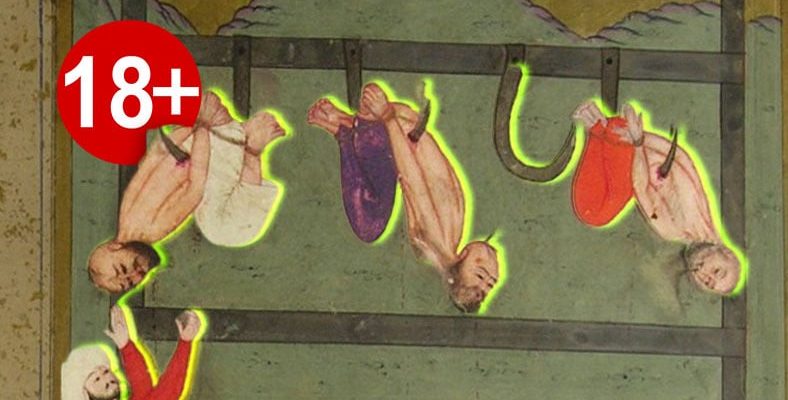For some it was the only way out, for some it was brutal. Some say ‘love for the throne’, others argue that ‘Everything was done for the survival of the state’. Those who were flayed, strangled, poisoned, and dismembered…
As in the history of every state In the Ottoman Empire, too, thousands of people died in the clutches of an executioner; While some of them paid the penalty for their crimes with their lives, some of them became the victims of an intrigue, and some of them were killed by groaning under torture.
Most of the death sentences in the Ottoman Empire were generally murder, banditry, riot and political crimes result has been applied. We know it’s a little scary, but let’s look at how the execution, which is one of the unknown or overlooked aspects of the state, was applied.
Let’s start with one of the most controversial issues. Political reasons were the most vocal cause of execution.
This provision belongs only to the sultan and “sa’i bi’l-fasad” is defined as. When this practice is left aside, the crime of ‘murder’ stands out as the most common reason for execution. Political prisoners were strangled with an oily lasso, and after their execution, their heads were separated from their bodies with a sharp razor called the “cipher”. This head is then placed on an example stone or the great gate of the palace. “Bab-i Humayun” was thrown before him.
Do not deform the severed head It was put in a bag full of honey and taken before the sultan. For this reason, the head and body of some personalities were buried in separate places.
Perhaps the only difference of the Ottoman Empire from other states at that time was that it bound torture to certain laws.
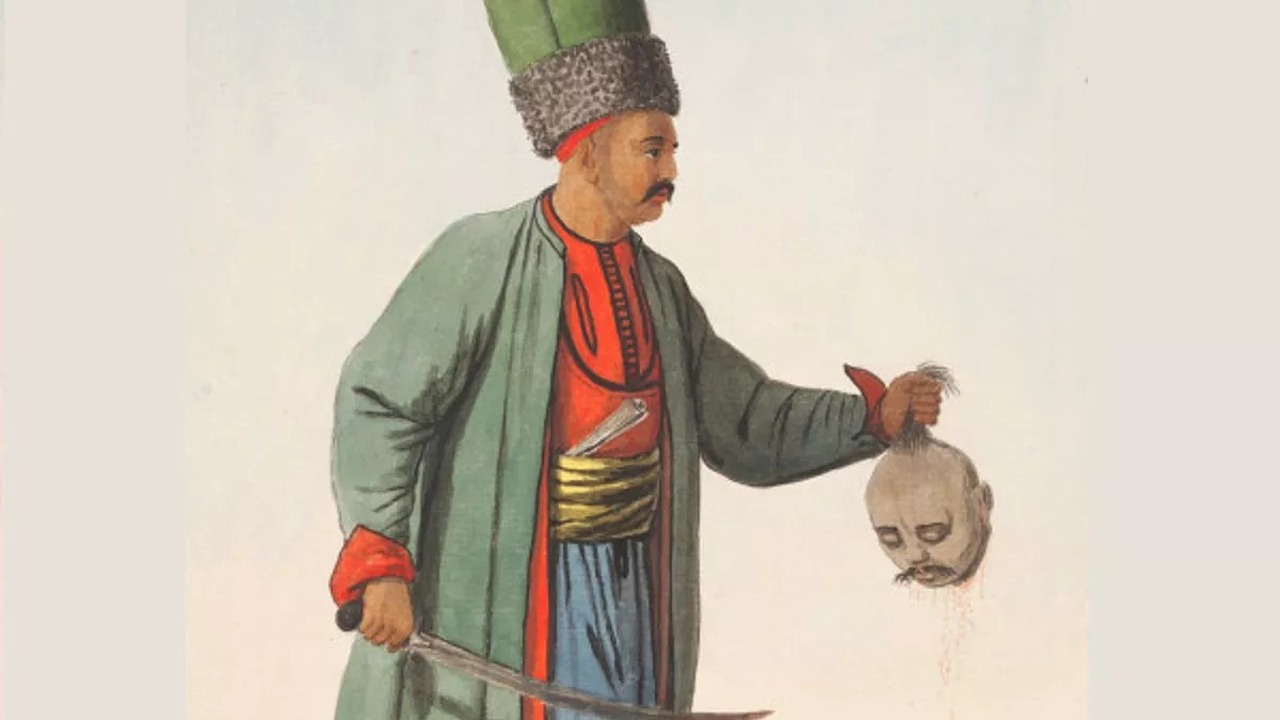
Until 1826 Tanzimat Edict II, which remains valid. In Beyazıt’s General Code, it was stated in detail in which situations and to whom torture would be perpetrated. In practice, no distinction was made between men and women, and torture was used as both an investigation and an execution method.
For example, Bayezid’s General Law on the castration of the rapist Article 26 we come across: “The genitals of those who kidnap and rape a girl or boy should be cut off.”
Thieves were hanged in the neighborhood where the crime was committed and even on the door of the house, shop or inn they entered.
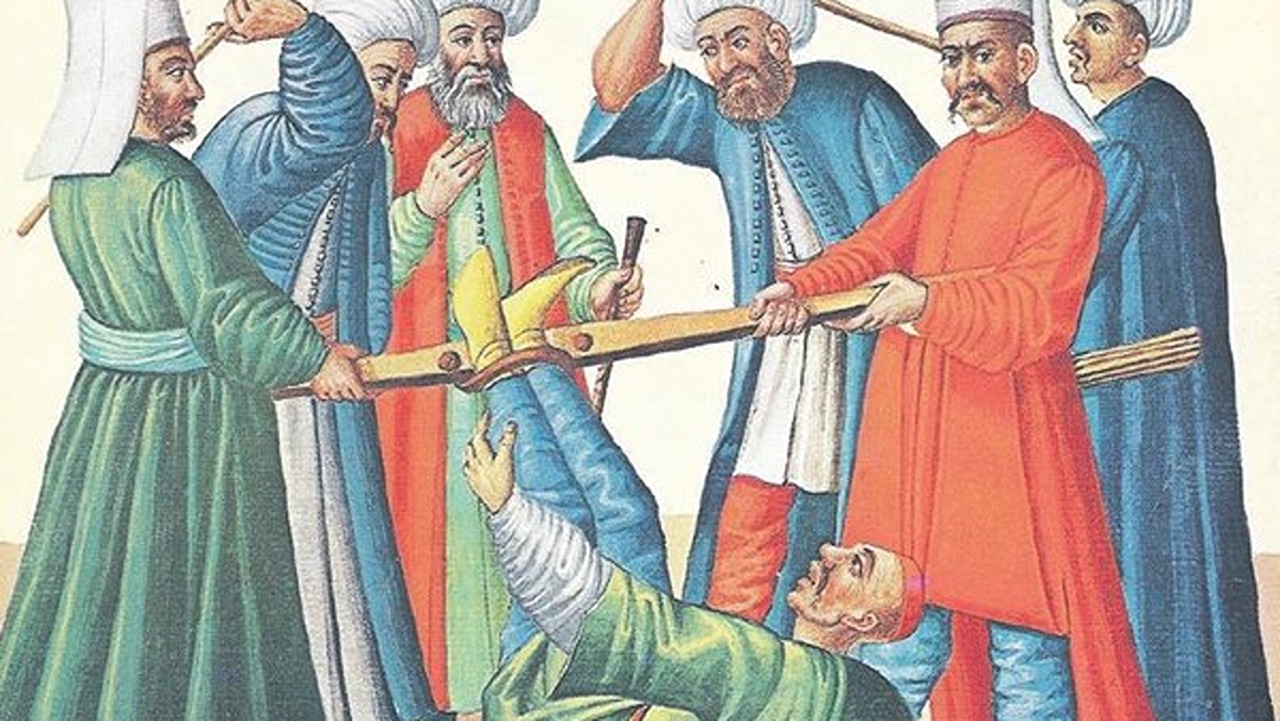
theft crimeIt was a very common crime in the Ottoman Empire. The penalty for this was death, especially this practice was made for criminals and night thieves.
Janissary revolts had become a very challenging problem in a certain period of the state.
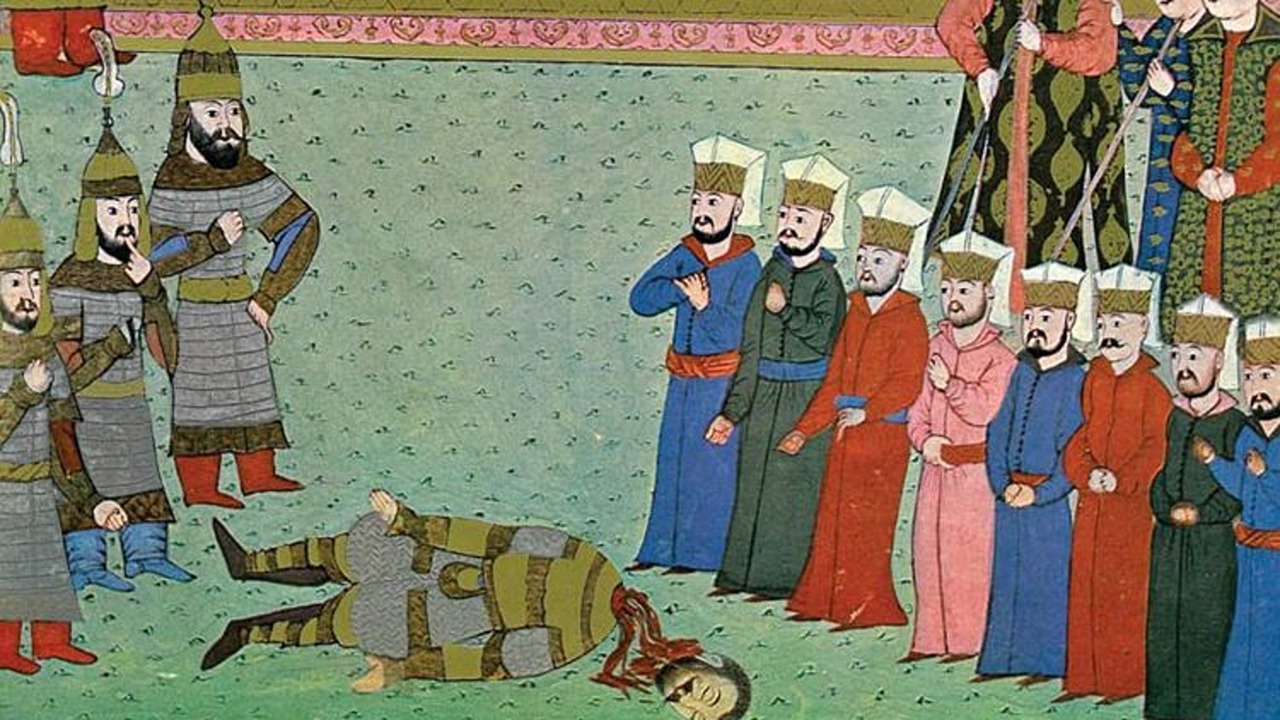
Sipahi and Janissaries, their heads were cut off and stones were tied to their bodies and thrown into the sea.. During the revolt, the grand vizier and the ulema class, who were convicted by the janissaries, were stabbed in the streets or in front of the palace; they were usually hung on the trees in the Horse Square. Reşad Ekrem Koçu relates the death of Musa Çelebi in the 1632 Janissary revolt as follows:
“They took Musa Çelebi to the top of the stairs. The Pasha had warned his masters, one of them hit Musa Çelebi with a strong shoulder and threw him down the stairs. The lad’s shriek of pain and horror is indescribable. Musa Çelebi had not yet surrendered his soul. They swept the seriously injured young man over the wall of the palace as if he were a rag sack, and threw him out to the side of the square, where once again a dagger was placed on him. After stripping naked his bloody corpse in the Horse Square They left it under a plane tree. The non-stop falling snow became the shroud of the innocent youth.”
Hook, cross and stake, here are the most feared forms of execution in the Ottoman Empire:
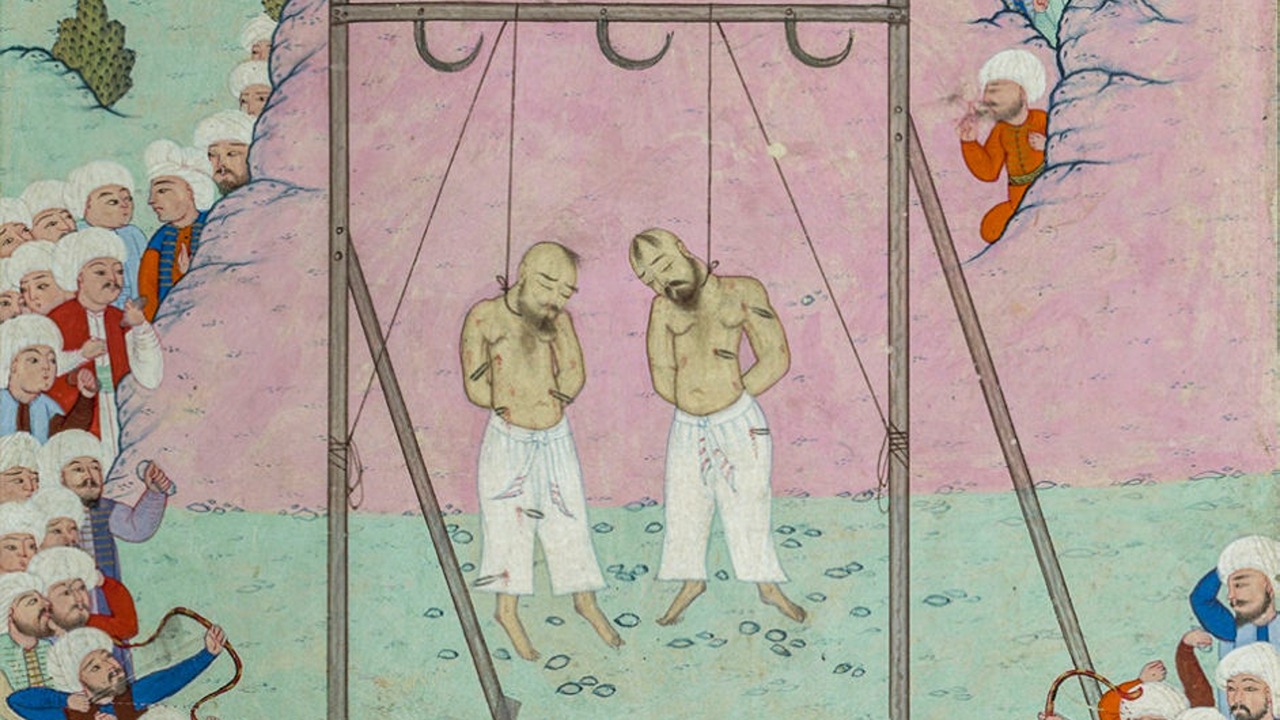
Of course, these forms of execution were not applied to everyone, and this required extraordinary events. Pirates were executed with hooks, and those who acted as spies were executed with the cross. While returning from the Mediterranean, the captains brought a group of captive pirates, and some of these captives were hung from the masts of the galleys. Those executed by hanging they were relatively lucky; because other pirates were punished with hooks.
Çengel was in Eminönü, Istanbul.
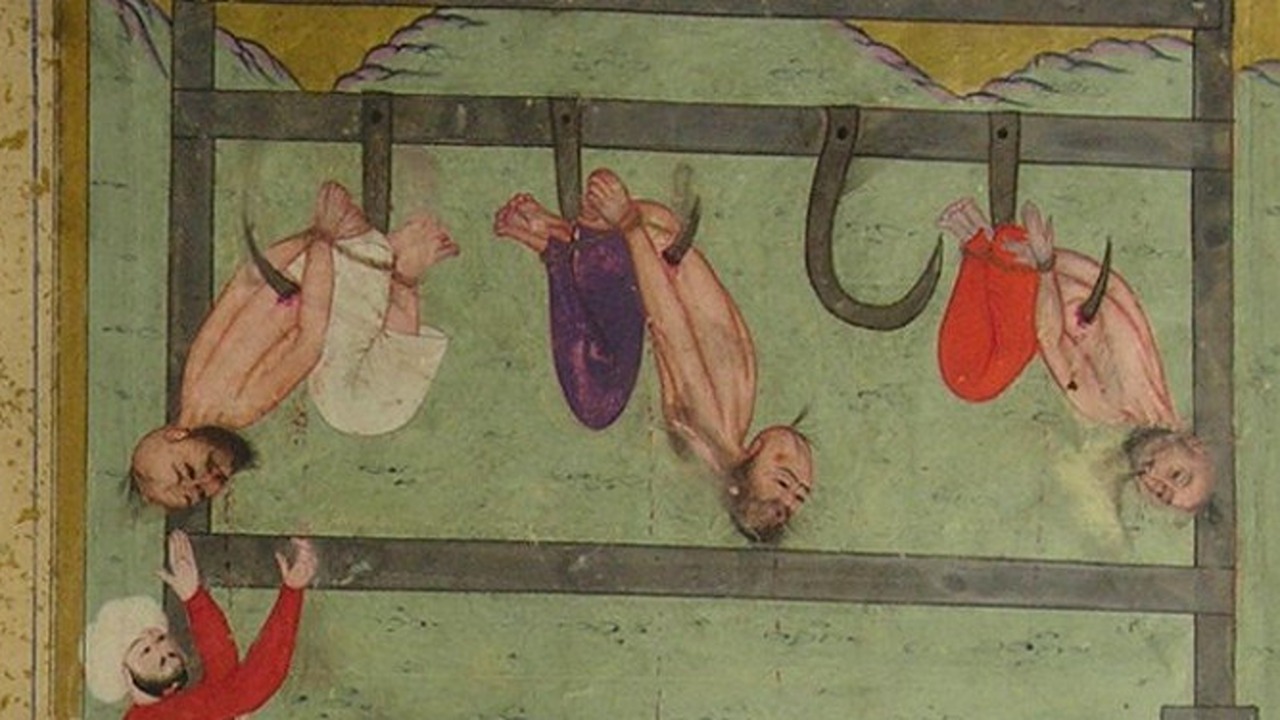
There were hooks made of thick planks, large and long, with their heads curved upwards and pointed, in the shape of a sharp comb. Those sentenced to this punishment are pulled up with thick ropes, with their hands and feet tied over their backs, and suddenly was left on the hook.
Those punished by the cross were likewise robbed and bound face down.
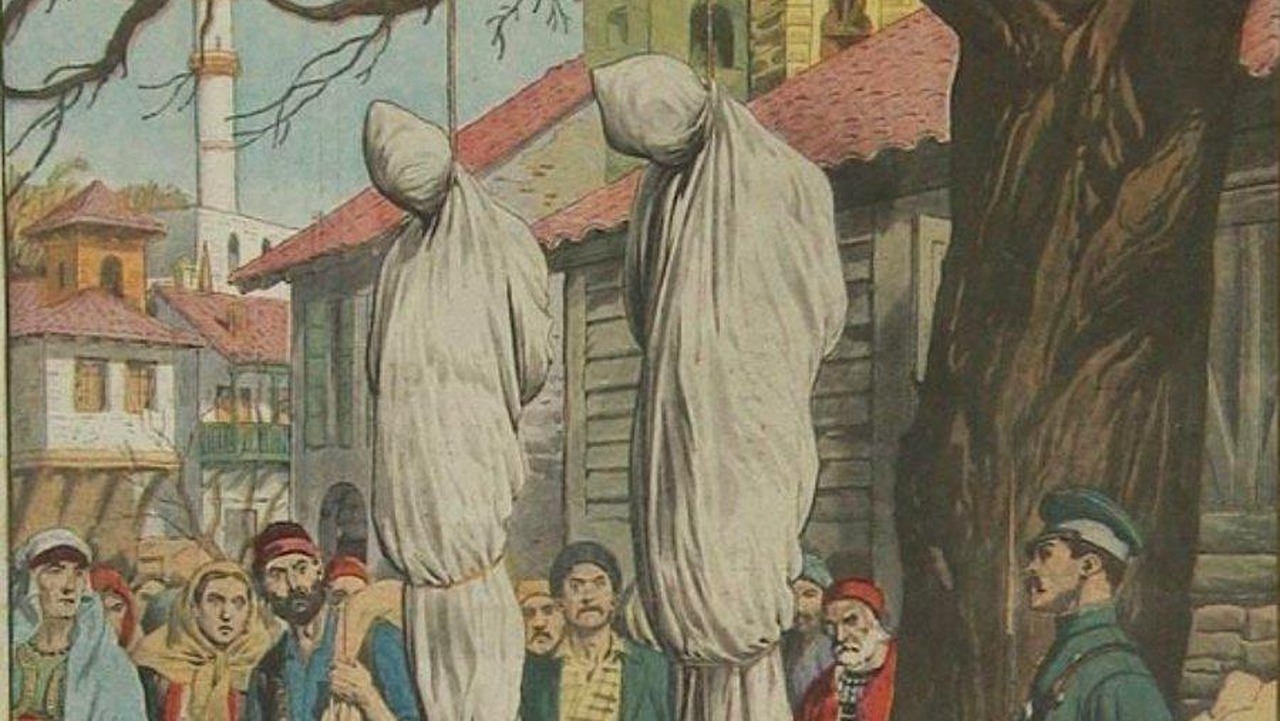
Shoulders of the prisoner in crucifixion and their buttocks are carved with a knife, These carved parts were burned by sewing oil candles. He was then driven around the city on a camel, tied to the cross.
Towards the end of the 16th century, Bostancıbaşı Ferhat Ağa issued a one-time “cannon penalty”.
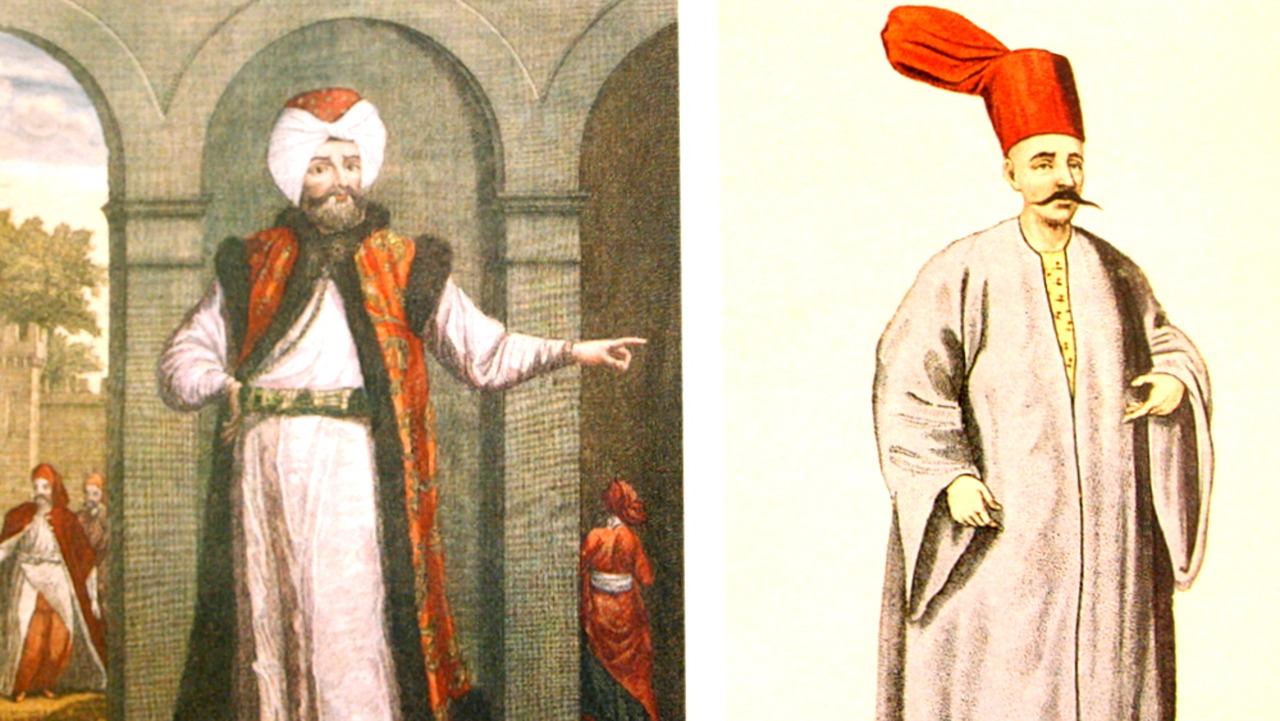
According to Reşat Ekrem Koçu, It was a janissary who received this punishment, and his crime was an act that did not fit the hearth. It is said that he kidnapped the wife of an imam and cut her hair; just like he was in a male form. When both of them are caught in a coffee house in Üsküdar, they are taken to the police station and the woman is sentenced to death for the crimes of escaping to another man while she was married and disguising herself as a boy. Ferhat Agha, He did not consider the punishments we have mentioned for the janissary sufficient, and stripped the janissary naked and had his knuckles broken with an iron hammer. Then the janissary, who was wrapped in a mortar, was shattered on the spot.
When a statesman was sentenced to death, the sentence was carried out with respect.
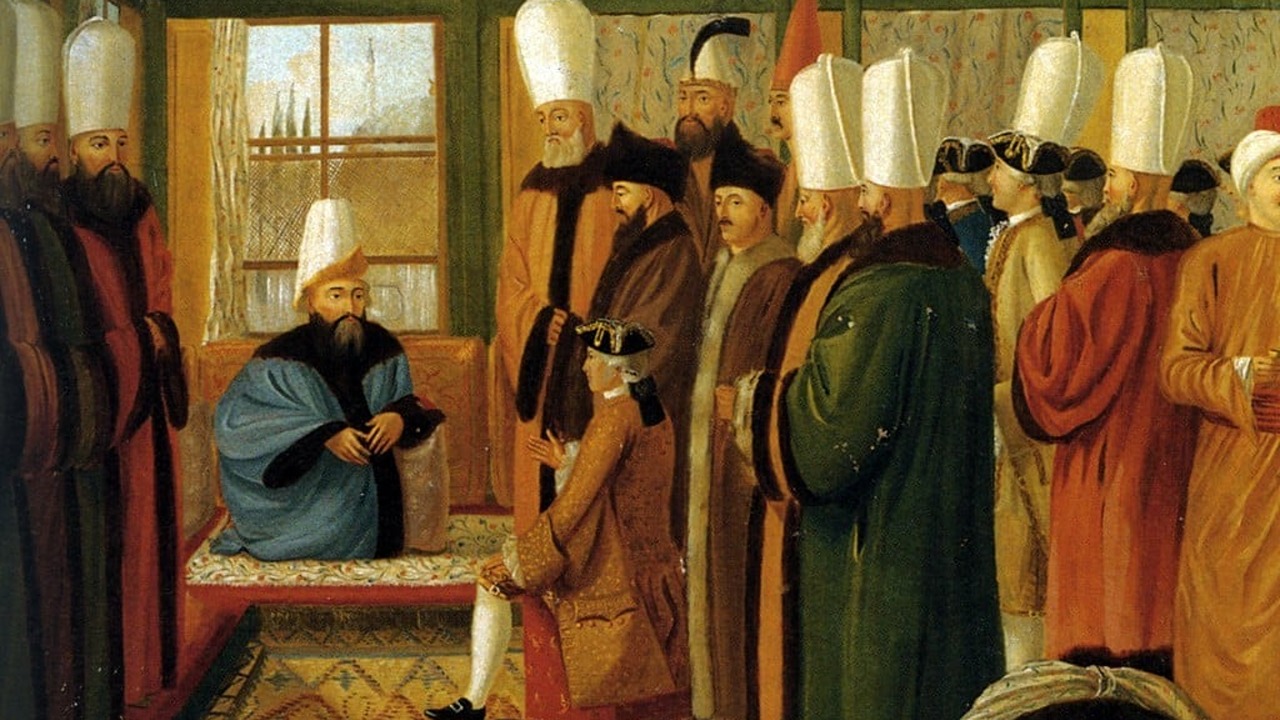
The edict issued against a statesman is given to him by the bostancıbaşı; His skirt was kissed and that person was respected. After words of consolation have been spoken He was even allowed to perform ablution and pray. This decision was met with fortitude by the statesmen.
Kara Mustafa Pasha of Merzifon, who was executed in Belgrade after the Siege of Vienna, after performing his prayer. “my body falls to the ground” It is said that he helped the executioner by lifting the rugs in his room and raising his long beard with his hand.
There were also death sentences without executioners.
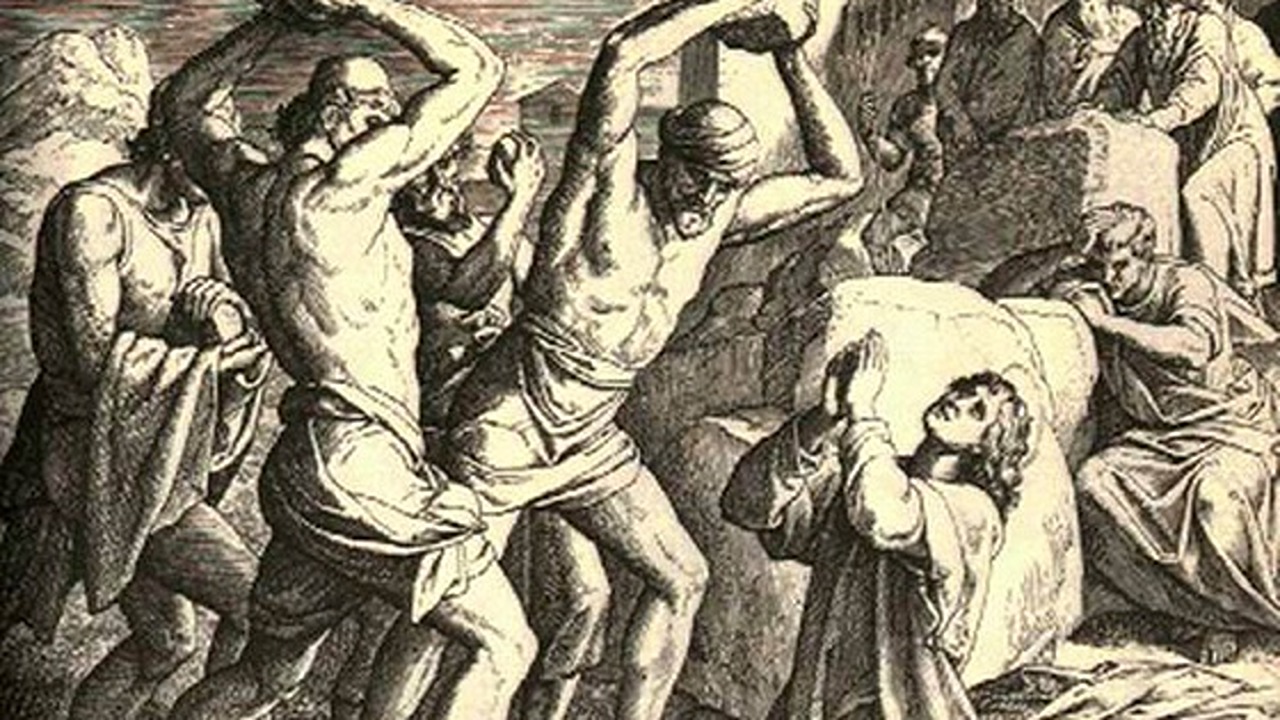
These types of executions “recm” or “stone-hold” it is called. Although this punishment was applied to women who were learned to have relations with a non-Muslim man, only one woman was sentenced to this punishment during the Imperial period. Executioners bury the woman in the ground up to her chest with her arms inside, and are booed by the people and showered with stones. The old muverrihs also used to call this language “don’t waste it”.
“If the Sultan does not exist, the fault will not come from the executioner.”
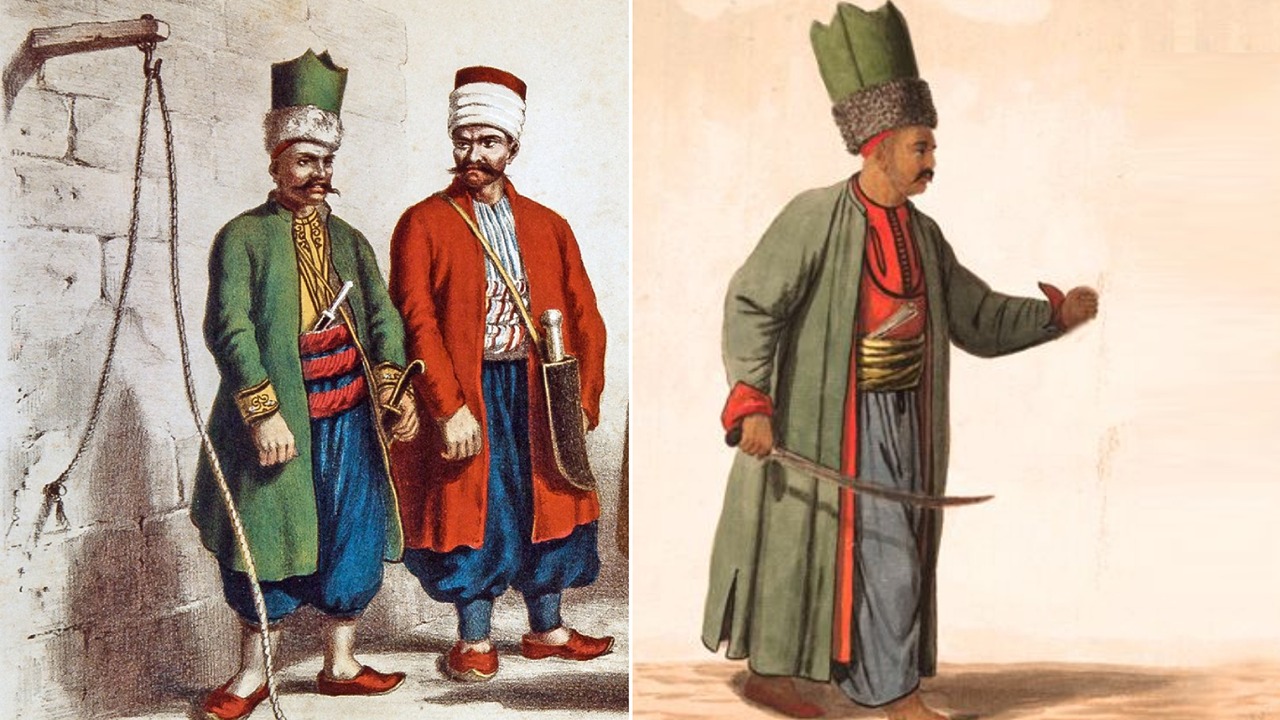
Among the most famous executioners in Ottoman history, Kara Ali in the 17th century was his sidekick. Hammal Ali and Suleiman, who is known as the chief executioner has. Evliya Çelebi describes Kara Ali as follows: “The master of this arm is perfect Black is Ali they roll up their bases, put the tigi firetab on their belt, hang their other torture tools on their belt, tuck the axes that will break hands and feet, adorn their belts with their tools, and pass by by reveling in bare-sword rollers, neuzubillah, none of them are poisonous men who have no light on their faces…”
We should know that the people who perform this task are not just executioners.
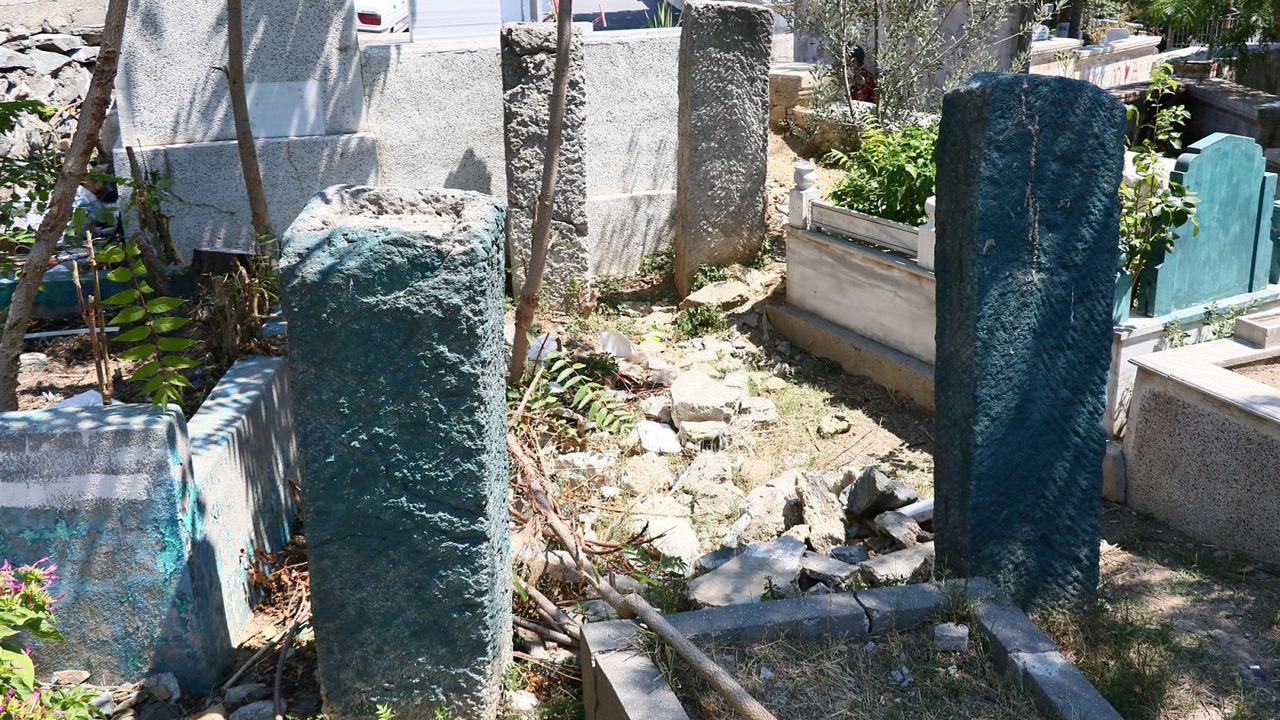
Executioner’s tombs / Eyüp
Sources say that gypsies have been the executioners in the Ottoman Empire for a long time. They serve under the command of Bostancıbaşı, the verdict on the person to be executed is personally It was conveyed to Bostancıbaşı. Executioners were chosen from those who were both mute and deaf. The reason for this is that the victim did not come to mercy by hearing their pleas and cries; it was so that he would not reveal the confidentiality of his work by voicing it.
With the reign of Sultan Abdülmecid, the tradition of having an executioner in the palace was ended; The Executioners’ Hearth was buried in the dusty pages of history over time. If one day your way falls to Eyüp If you happen to stop by Pierre Loti, Proceed a few hundred meters further and go to Karyağdı Baba Tomb and you can come across one of the quietest and most remote cemeteries, namely the executioner’s graves.
RELATED NEWS
Why Was the Janissary Corps Abolished? The Incident That Deeply Shocked the Ottoman Empire with the Death of More than 40 Thousand Soldiers: Case-i Hayriye
RELATED NEWS
III. The Story of Hundreds of Monkeys Executed in Istanbul for Prostitution During the Murat Era
RELATED NEWS
Meet the Serial Killer ‘Kasimpasa Monster’ Who Sent Scary Letters Even To The Police In The Ottoman Period
RELATED NEWS
